Esteemed Disney Legend, Bob Gurr, shares his recollections and pictures of what it was like in the dream factory known as the Walt Disney Studios Machine Shop. Roger Broggie Sr. managed the place at a time when all the workings of Disneyland were being constructed.
Today’s Wheel of Years has stopped at 1954, so here we go. Movie studios in the early days owned and serviced their own camera equipment in a department usually known as Camera Service. This work was performed at the Walt Disney Productions studio in Burbank California in their Machine Shop managed by Roger Broggie Sr., where I was assigned to design the Disneyland Autopia car in October 1954. While camera service was the primary function of the machine shop, many pieces of movie equipment were custom modified in the shop. So the machine shop was actually a tiny custom manufacturing outfit.
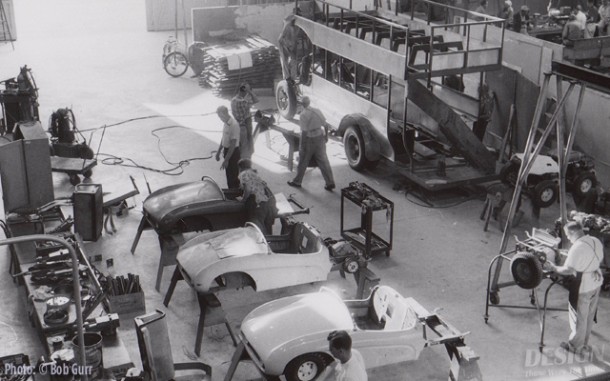
Roger was Walt’s go-to man for all things mechanical, especially all railroad interests, thus Roger’s machine shop was the logical first starting place for design and manufacture of attractions for Disneyland. The shop was located in a single building on the Burbank studio lot near the Buena Vista entrance. The shop personnel consisted of Roger as manager, Elena Astamendi, secretary, Bob Otto and Eustice Lycett, draftsmen, Don Iwerks plus around six others as camera service technicians. As Walt’s two year old WED Enterprises began to ramp up the design and development of Disneyland, Walt placed all efforts towards the steam railroad and mechanical rides in the hands of Roger and the machine shop.
In addition to the drafters and camera technicians, Roger had hired experienced railroad equipment fellows to work in the adjacent old Hyperion Zorro building (home of today’s Mickey’s of Glendale on the studio lot). Earl Vilmer was in charge of the railroad, Ed Lingenfelter was drafting up two locomotives, while Eddie Sargeant drew plans for the rail cars. Dick Bagley did all the drawings for the Mark Twain riverboat steam engine. I shared office space with these highly experienced gents in the Zorro building also, where they told me endless tales of railroad life in the late 1800s. Thus the genesis of what later became a vast manufacturing empire that lasted until 2012.

Various studio department were busy building the Disneyland Railroad passenger cars and the Mark Twain riverboat superstructure in a movie sound stage. Bob Mattey’s special effects shop had a Peter Pan test track set up, while various pieces of Disneyland items had been purchased and were undergoing modifications and themed painting. It seemed that there was more Disneyland than movie stuff going on in late 1954. To me, it was most magical and fascinating to see all this stuff being prepared for delivery to Disneyland in time for the July 1955 grand opening.
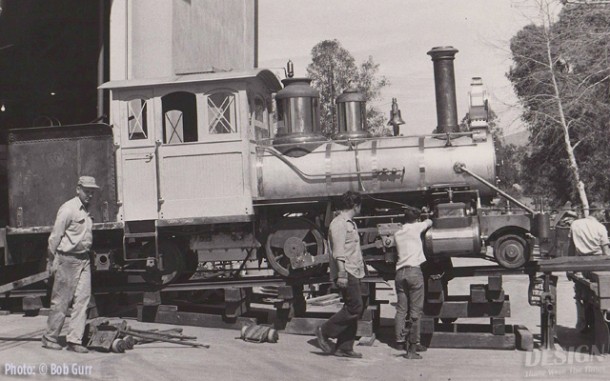
By May 1956 all of Roger’s operation was moved to a brand new purpose built engineering and manufacturing plant on the studio lot next to the ink and paint building, housing camera service and the studio electrical department. I was now part of a 10 man drafting department while the shop had expanded to maybe 30 machinists with all kinds of lathes, mills, welding, and sheet metal production machinery. We built two Omnibus’s, two Viewliner locomotives, numerous Autopia cars, and virtually all the early animated creatures for the park in this new shop.
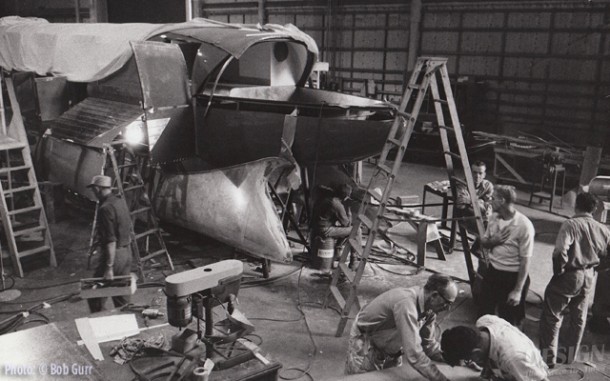
By early 1959 we had a movie sound stage filled with two Monorail trains, more back lot shops doing Disneyland manufacturing in addition to the movie sets and props. We even had a Submarine test tank installed next to the machine shop. A union situation developed where each kind of craft could only touch their part of a job, even though the equipment encompassed numerous trades like mechanical, electrical, plastic, upholstery, painting and the like. Each craft had to wait for the union craft person, not able to touch the other guys work piece. Thus was the founding of MAPO, the new Glendale based multi-craft union factory built adjacent to WED’s new 1961 Imagineering center. Over several years more factory buildings were added as the work load increased in preparation for the 1964 New York World’s Fair.
As we began manufacturing for the 1971 Walt Disney World opening, Roger contracted numerous fabrication companies around the country from Seattle to Florida. MAPO became a giant operation with all kinds of engineering departments, a full factory, with additional operations scattered around Glendale’s Grand Central Industrial Center. One shop in particular was Airway, the old Grand Central Air Terminal aircraft hangers which were the biggest center of private and commercial aviation of the 1930s. Additional large central shops were built at both Disneyland and WDW to handle all the theme park manufacturing as well as standard maintenance work.
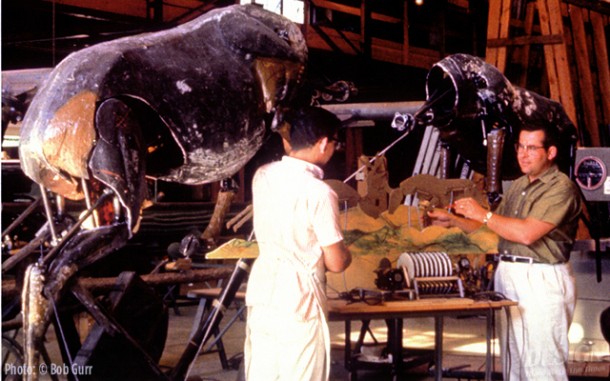
Imagineering eventually needed even more space, so the Glendale MAPO operation was moved to the nearby Tujunga facility next to the Burbank Airport in the early 1990s. Over time, Disney had placed ever more manufacturing contracts with outside vendors who developed excellent expertise on quality Disney type work. Since the Disney internal shop operations had matured over the decades, the inevitable increase in shop rates began to climb much higher than the outside vendor shop rates.
It wasn’t long before a combination of retiring Disney technicians, layoffs after major projects, and the financial impediment to continuing Disney internal manufacturing eventually resulted in the closing of all but a tiny special animation shop by 2012. In that year the majority of all the MAPO, Airway, and Tujunga tooling, molds, and historically developed unique Disney Audio Animatronics were transferred to Garner Holt Productions in San Bernardino California, 50 miles east of Glendale.
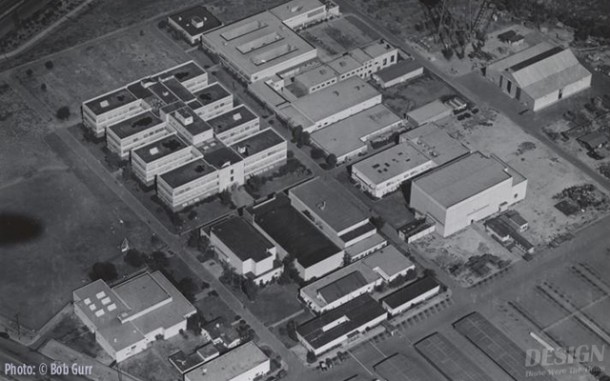
By that time, Garner Holt had earned an outstanding reputation for high quality and affordable Disney attraction engineering and manufacturing. Their work has been performing beautifully in every Disney Theme Park in the world for over two decades. But it was Walt’s faith in Roger Broggie Sr. and his vast mechanical expertise that founded an amazing engineering and manufacturing empire that endured for 58 years.

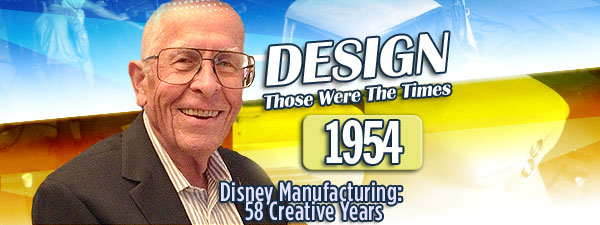
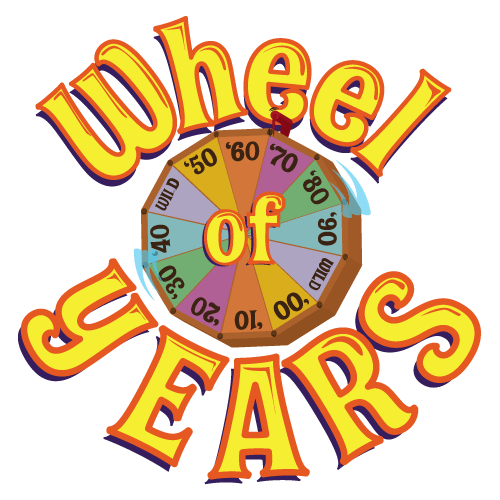
You must be logged in to post a comment.